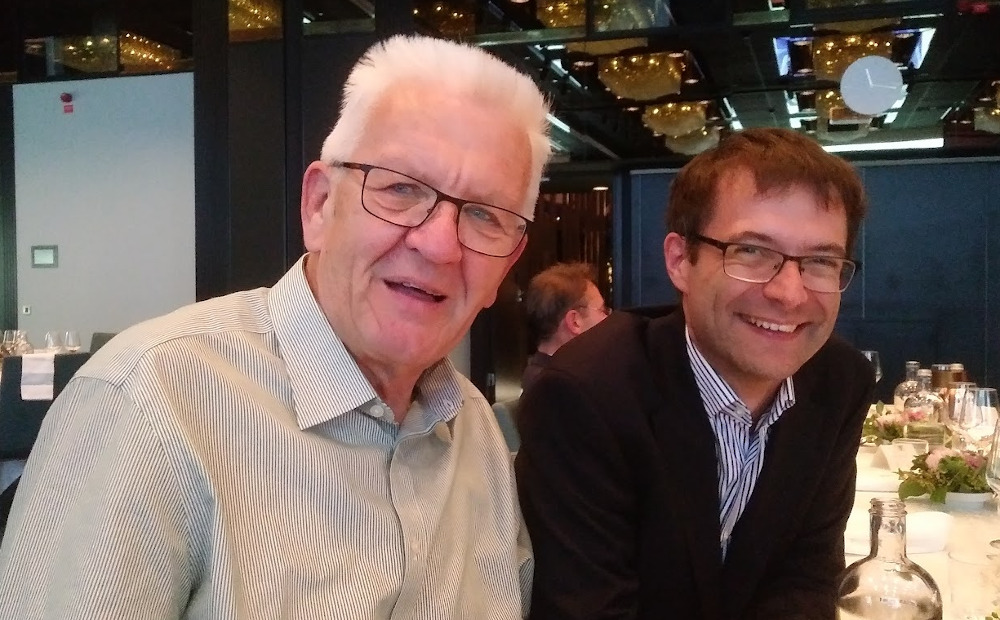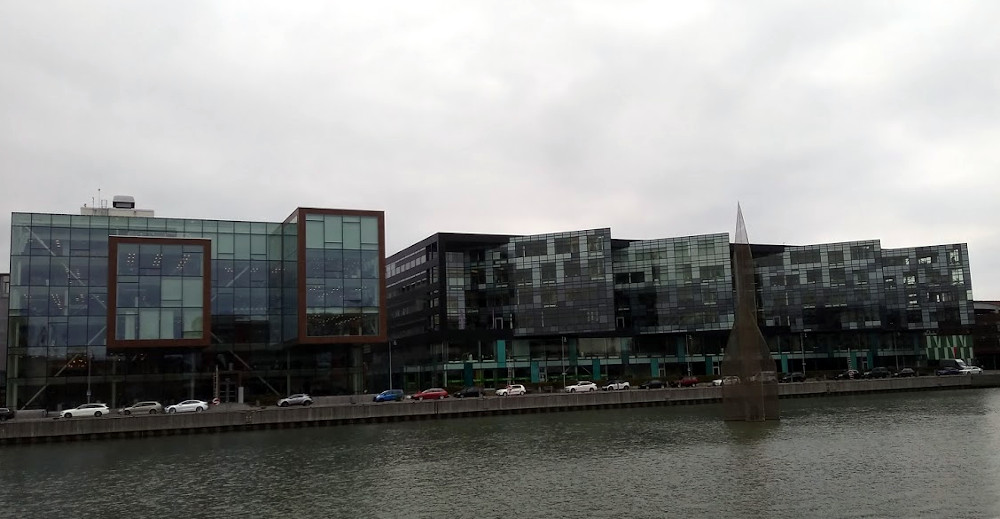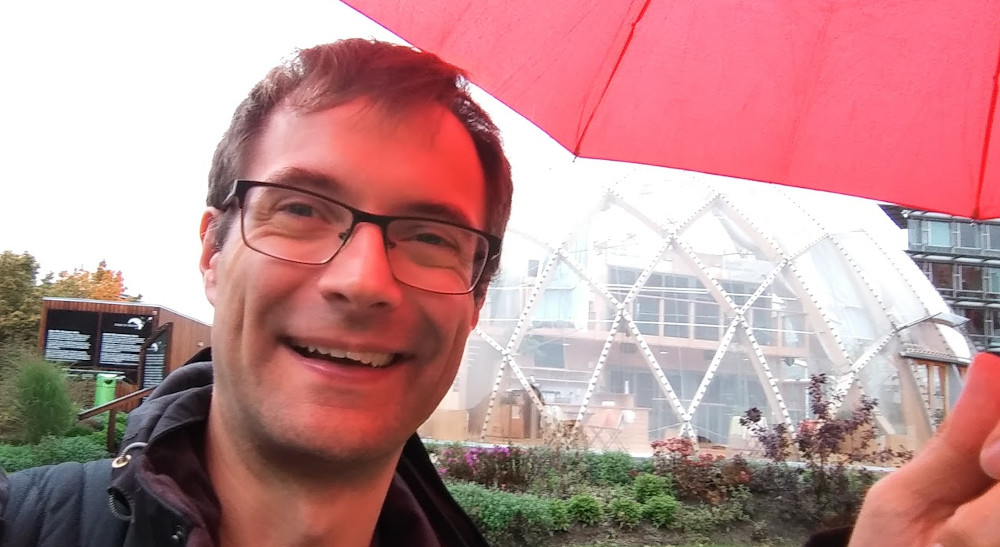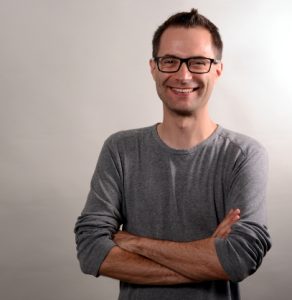Report about the delegation journey with Prime Minister of the State of Baden-Wurttemberg Mr. Kretschmann to Finland and Sweden
Our delegation journey began on 23rd of September at the airport of Frankfurt. We left Germany for Helsinki in Finland and headed-on to Oulu in the far north of Europe. At the first evening event, the Prime Minister of the State of Baden-Wurttemberg Mr. Kretschmann warmly welcomed everybody together with local city officials. Our hotel was built in a typical northern style and had a wonderful lobby. That was a great start of our journey.

During the gala dinner I have talked with Prime Minister Kretschmann about innovation in Baden-Württemberg and the support for start-ups.
At the first day, we visited VTT, the Fraunhofer pendant in Finland. After a general introduction we took a very interesting tour through the laboratories. The VTT also supports scientists to found their own start-ups. The start-up presentations had a wide range from highly resistant electric cables over bendable LCD displays to new solutions for alcohol tests for drivers. Our next stop was the University of Oulu, the science center in the most northern innovation eco system in the European Union. The University of Oulu mainly focuses on the research of future areas like communication, digitalization and artificial intelligence. During my discussions with the local scientists from the university, I learnt that both companies and universities in Finland have the same problems to find experts in these fields comparable to Germany.
At the afternoon, we visited “The Home of Radio” – the research and development center of Nokia in Oulu. The story of Nokia is a very good example of how the finish industry has changed during the last decades. At the beginning of the 20th century, Nokia started as a sawmill, then developed further to a large rubber production company and finally became the worldwide-leading mobile cell manufacturer. However, at the end of the first decade of the 21th century Nokia struggled with the decreasing demand for classical mobile cells. The decision was made to focus on network technology. In discussions with the employees of Nokia in Oulu I was very impressed by their strong will to never give up! The result of this attitude is that both the management and the employees know, that they constantly have to adapt the company to the requirements of the market. Like Nokia, the whole industry in the Oulu region is following this paradigm. Many of the former Nokia employees founded their own companies after they lost their jobs. Today, Oulu is well-known for these young companies. After Nokia, we visited Bittium. There, I found the same faith on a positive future like at Nokia and the start-ups. The day ended with a gala dinner in the city hall of Oulu.
At Wednesday, we took a flight back to Helsinki. At the capital of Finland, we got an introduction into the start-up eco system at Helsinki with different presentations at the headquarter of F-Secure. Two presentations are still in my mind. The first one is a presentation by Pekka Sivonen about the topics artificial intelligence, climate change and mobility. The second one was given by Sampo Hietanen in a very fresh way. He is the CEO of the start-up MaaS Global. With its service “Whim” he wants nothing less than to become the mobility platform of the future. His main product is an app, which gives its user a convenient access to trains, local transport systems and car sharing. At the evening we were invited for the celebration of the day of German Unity in the German embassy in Helsinki.

Lindholmen Science Park in Gothenburg
On Thursday, after our departure from Helsinki in the early morning, we arrived in Gothenburg in Sweden. After a presentation of the business region Gothenburg we headed-on to the Lindholmen Science Park. There we got a professional overview about the political and economical situation in Sweden as well as an overview about the economics in Gothenburg.
The story of Gothenburg sounds similar to the story of Oulu. In the past, Gothenburg was one of the world-leading manufacturing sites for ships. However, at the end of the 70s the ship construction industry entered a crisis. During the mid-90s the city government decided to focus on future technologies like computer technologies and communication technologies. Therefore, they founded the Lindolmen Science Park. However, it took almost twenty years more until the science park became a place for 250 companies with approximately 10.000 employees. On top of these employees they have 10.000 additional students, scientists and teachers who all are working in the science park, too.
At Lindholmen Science Park we stopped at the Geely Innovation Center and at Ericsson. At Ericsson, we had an exciting discussion about the many possibilities of 5G, the new mobile network standard.
During the evening we had the official final dinner of the delegation journey in our hotel.

Last day in Gothenburg: Looks like in Seattle
Finally, at Friday morning, we went to the Lindholmen Science Park again with several presentations about different innovation projects. The delegation journey ended with our visit of the Technical University of Chalmers.
On Friday night we were back in Stuttgart.

About the author
Dr. Michael Raschke is Co-Founder and managing director of Blickshift GmbH and an expert for a visualization-based eye movement analysis. Michael is author and co-author of more than 40 scientific publications in the fields of eye tracking visualization, visual analytics, cognitive modeling and human-computer interaction.
Thank you for sending your comments to the author directly.

